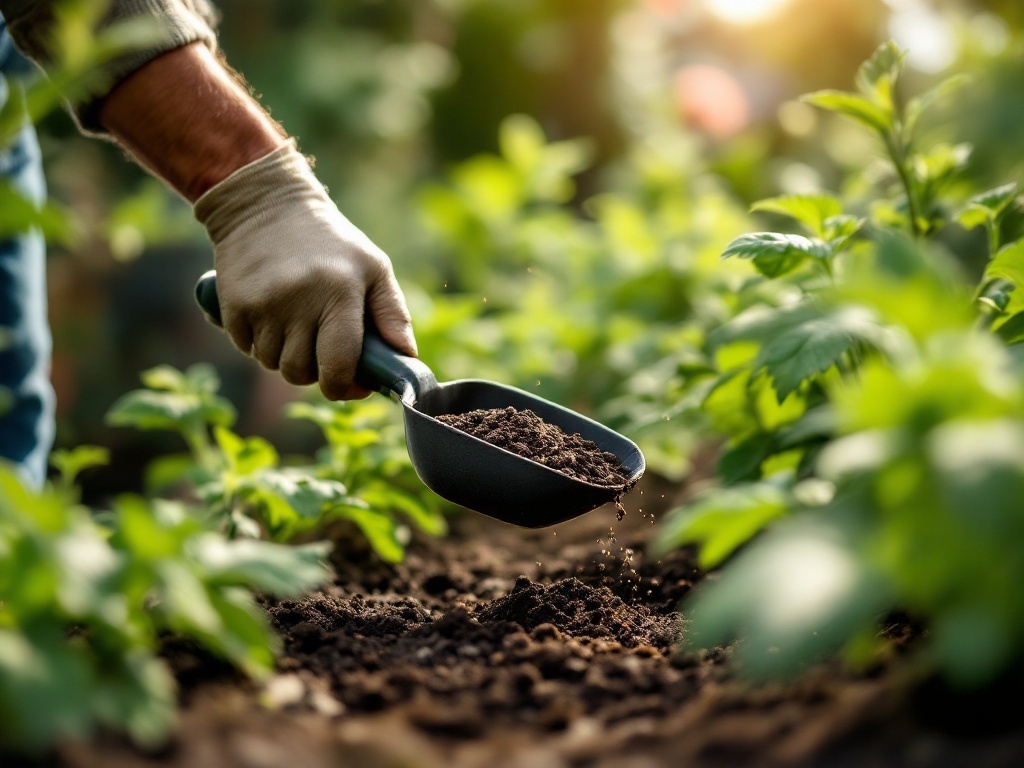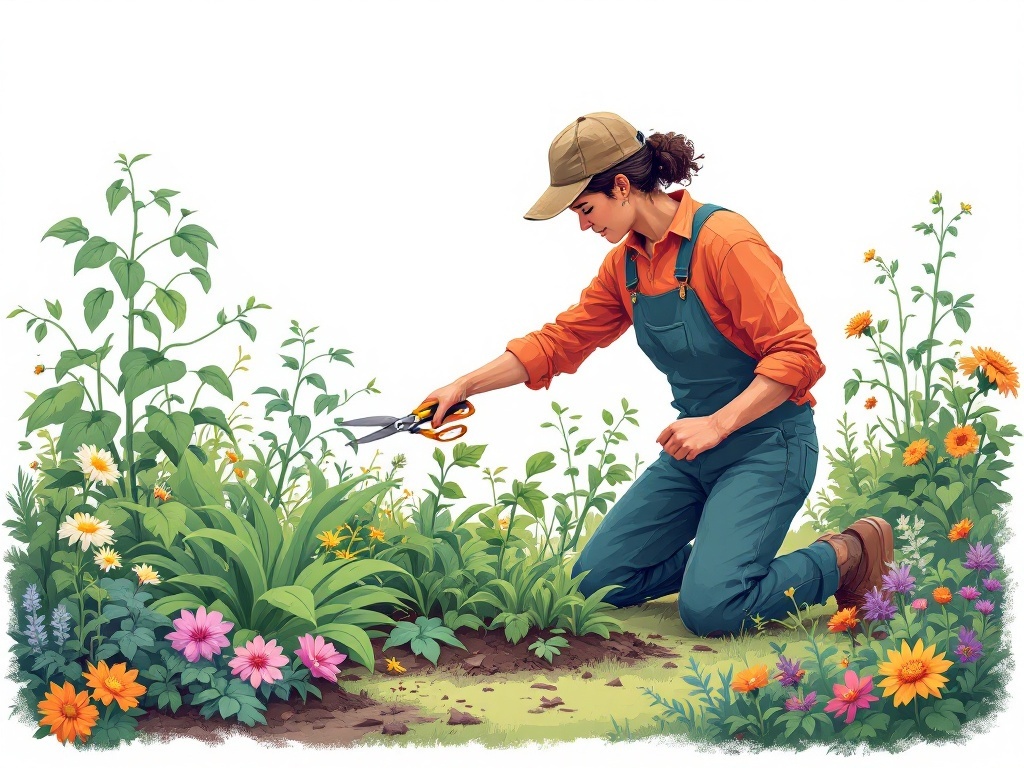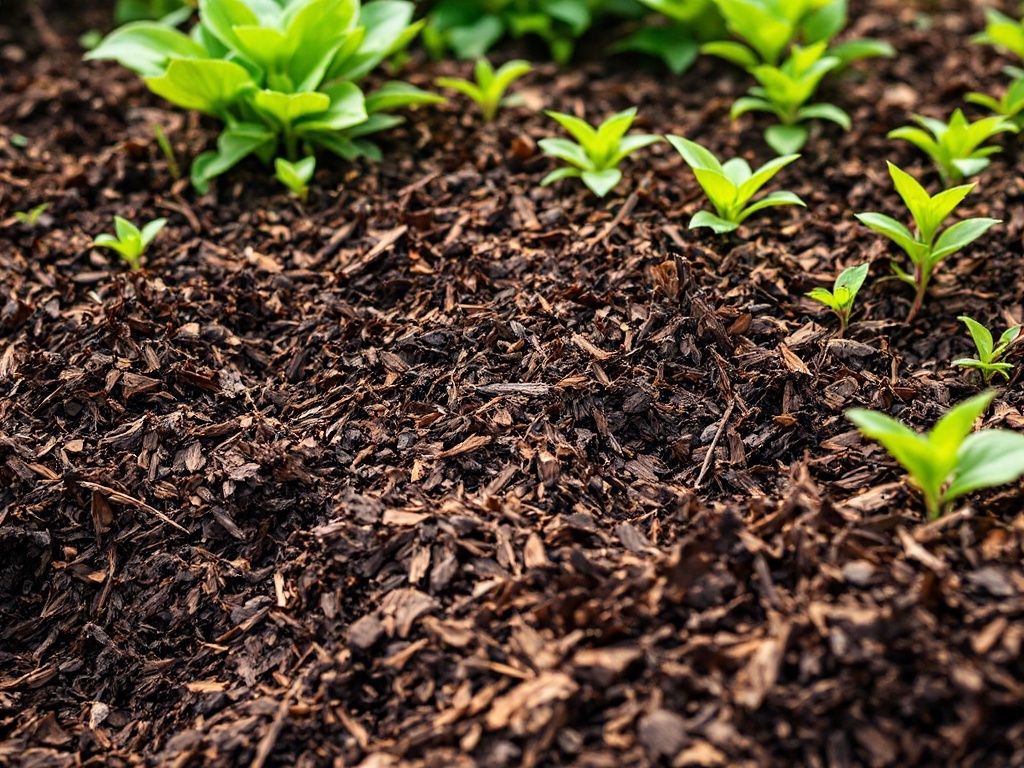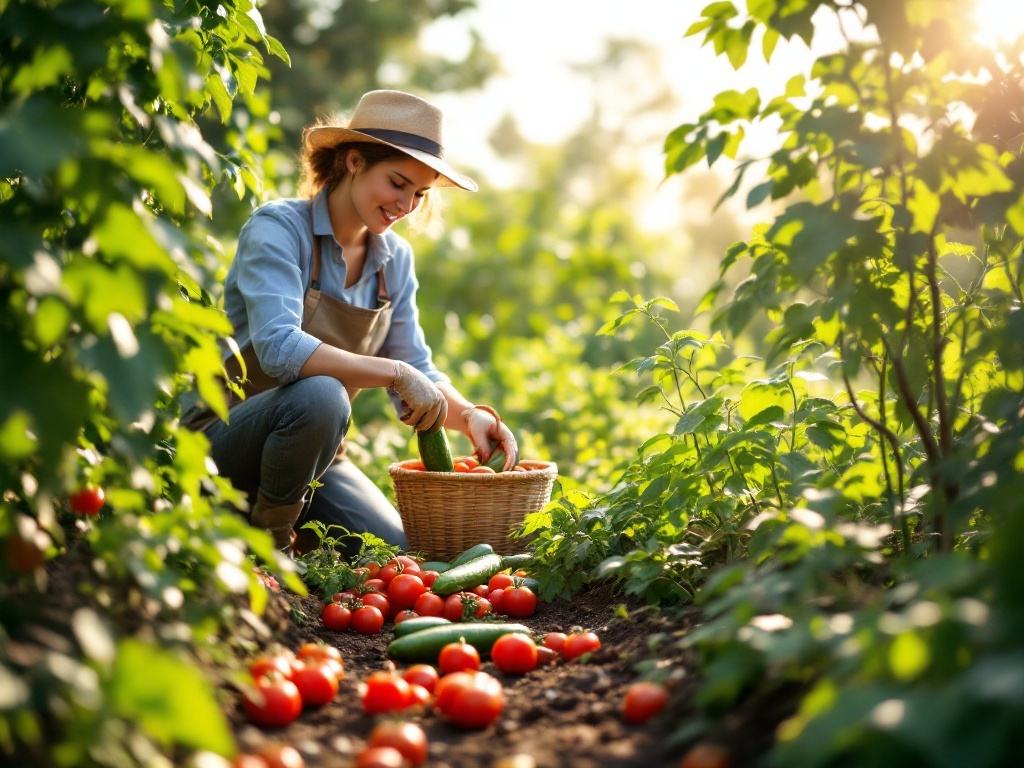
10 Ways To Take Care Of Your Garden In Summer
Summer can be a fantastic time for your garden, but it also requires some extra attention to keep everything thriving. From watering and weeding to pest control and pruning, there’s plenty to do to ensure your plants stay healthy and vibrant. Check out these ten helpful tips to keep your garden in tip-top shape during the sunny months!
Fertilizing for Sustained Nutrient Supply

Summer is a prime time for your garden, and keeping plants healthy is key. The image shows a hand holding a scoop filled with rich soil, ready to nourish the plants. This visual emphasizes the importance of fertilizing during this warm season.
Fertilizing provides essential nutrients that help plants thrive. As temperatures rise, your garden needs a consistent supply of nutrients to sustain growth. Start by choosing a balanced fertilizer that suits your plants. Organic options like compost or fish emulsion work wonders.
Timing is also crucial. Apply fertilizer every few weeks to keep the nutrient levels up. You can do this during your regular watering routine. Just sprinkle some fertilizer around the base of the plants before watering. This way, nutrients will seep into the soil and reach the roots quickly.
Don’t forget to monitor your plants. If they seem to be growing slowly or the leaves are turning yellow, it might be time for more nutrients. Keep an eye out for signs of nutrient deficiency, and adjust your fertilizing schedule accordingly. A little extra care goes a long way in making your garden flourish!
Creating Shade for Sun-sensitive Plants

In the summer, some plants really struggle with the intense heat. This is where creating shade becomes super handy. Think of it like giving your plants a cool break from the sun. A simple way to do this is by using shade cloth, like the ones shown in the image. These can be draped over your garden to filter the sunlight.
The image beautifully captures how these shaded areas look in a garden. With the soft light filtering through, you can almost see the plants relaxing. Using structures like these can protect delicate flowers and veggies from scorching temperatures, helping them thrive.
Another option is to plant taller plants or install trellises that can cast shade on more sensitive ones. Just remember, not all plants need the same amount of light. By providing shade, you’re creating a perfect little microclimate for those who need it!
Efficient Watering Techniques for Hot Days

Summer can be tough on your garden, but with the right watering techniques, you can keep your plants thriving. The image shows a person watering their garden, a perfect reminder of how essential this task is during the hot months.
Using a watering can, like the one in the photo, allows you to direct water precisely where it’s needed. This method is not only efficient but also helps avoid overwatering, which can harm your plants. Aim to water in the early morning or late afternoon when temperatures are cooler. This timing reduces evaporation and ensures that the plants absorb as much water as possible.
Another great technique is to use drip irrigation. This system delivers water directly to the roots, minimizing waste. You can set it up on a timer, making it super convenient. Mulching your garden beds can also help retain moisture and keep the soil cool, reducing the frequency of watering.
Remember to check the soil moisture regularly. Stick your finger into the soil; if it feels dry an inch down, it’s time to water. This simple method can help you avoid unnecessary watering and keep your garden happy!
Pest Management Strategies for Summer

Managing pests during the summer is key to keeping your garden thriving. The image shows a gardener carefully planting a young seedling in rich, dark soil while holding a small bottle of liquid, likely a natural pesticide or fertilizer. This highlights the importance of using safe and effective methods for pest control.
One way to tackle pests is by introducing beneficial insects. Ladybugs and lacewings are natural predators to aphids and can help maintain a balanced ecosystem in your garden. Planting flowers that attract these helpful bugs can create a welcoming environment for them.
Another effective strategy is to use organic pesticides. These can come in various forms, from soaps to oils, and they often target specific pests while being gentle on your plants. Always check that the product you choose is safe for your garden.
Regular monitoring is essential. Keep an eye out for signs of pest damage, such as holes in leaves or droppings. The sooner you catch a problem, the easier it is to manage.
Finally, proper garden hygiene can make a big difference. Remove any dead plants and debris that might harbor pests. A clean garden is less attractive to unwanted visitors!
Pruning to Encourage Growth and Airflow

Pruning is a key part of garden care, especially in summer. The image shows a person carefully trimming plants, which is a great way to boost their health. This process helps remove dead or overgrown branches, allowing more light and air to reach the inner parts of the plants.
When you prune, you encourage new growth. This can make flowers bloom more beautifully and help vegetables produce higher yields. It’s not just about cutting; it’s about giving your plants a chance to thrive. Make sure to use clean, sharp tools for the best results.
The summer heat can make plants stress, so regular pruning can help them stay strong and vibrant. Watch for any dead leaves or stems that could be taking energy away from the healthy parts of the plant. A little trim here and there can go a long way in keeping your garden looking its best.
Implementing Mulch for Moisture Retention

Mulching is a game changer for your garden, especially in summer. The image shows a lush garden bed with young plants peeking through a layer of dark brown mulch. This not only looks great but serves a crucial purpose.
Mulch acts as a barrier between the soil and the sun, helping to keep moisture in. When the sun beats down, the soil can dry out quickly. By adding mulch, you reduce evaporation, allowing your plants to stay hydrated longer.
Moreover, mulch helps regulate soil temperature. It keeps the ground cooler during hot days, providing a comfy environment for roots. This is especially helpful for young plants that are still getting established.
Another bonus? Mulch can prevent weed growth. By blocking sunlight, it makes it harder for pesky weeds to sprout up. This means less time pulling weeds and more time enjoying your garden!
So, grab some mulch and get to work. Your plants will thank you!
Using Companion Planting for Natural Pest Control

Companion planting is a fun and effective way to keep your garden healthy and thriving during the hot summer months. The image shows young plants sprouting in rich soil, showcasing a vibrant mix of greens. These young plants can provide benefits when paired together, creating a natural ecosystem.
When you plant certain crops together, they can help deter pests. For example, marigolds are known to repel nematodes and other harmful insects. Placing them near your vegetables can act as a protective barrier. Similarly, basil planted near tomatoes can enhance their flavor while warding off pests.
This method doesn’t just keep bugs at bay; it can also boost the growth of your plants. Some plants can improve the nutrient uptake of their neighbors. When planning your garden, think about which plants grow well together. This way, you’ll create a thriving environment while minimizing the need for chemical treatments.
Encouraging Pollinators with Flower Choices

Summer is the perfect time to attract pollinators to your garden. The image above captures a vibrant mix of flowers buzzing with bees and butterflies. Colorful blooms like daisies and sunflowers not only enhance your garden’s beauty but also invite these helpful creatures to visit.
Choosing the right flowers is key. Opt for native plants that provide food and shelter for local pollinators. Flowers like lavender and coneflowers are popular, as they produce plenty of nectar and pollen. A variety of colors and shapes will appeal to different pollinators, so mix it up!
Consider planting in clusters to make it easier for pollinators to find food. An abundance of one type of flower can create a buffet, encouraging bees and butterflies to linger longer. Also, remember that some pollinators are attracted to specific colors. For instance, bees love blue and purple flowers, while butterflies are drawn to bright yellows and reds.
Incorporating a variety of blooming seasons ensures there’s always something to attract pollinators. Early bloomers like crocuses can kick things off in spring, while late bloomers keep the food supply steady into fall. This thoughtful planning can make your garden a constant source of sustenance for these essential insects.
Creating a pollinator-friendly garden isn’t just good for the environment; it also makes for a lively outdoor space. You’ll enjoy watching the busy bees and fluttering butterflies while knowing you’re helping nature thrive.
Harvesting Summer Crops for Fresh Meals

Summer is the perfect time to enjoy the fruits of your labor. This image shows someone joyfully harvesting tomatoes and zucchini in a lush garden. The vibrant colors of the ripe vegetables reflect the season’s bounty.
Picking fresh produce is not just satisfying; it also inspires delicious meals. Imagine tossing freshly harvested tomatoes into a salad or grilling zucchini for a tasty side dish. These ingredients can elevate any summer meal.
Timing is key when it comes to harvesting. For tomatoes, look for a deep red color, and for zucchinis, aim for a size that fits comfortably in your hand. Picking them at the right moment ensures maximum flavor and freshness.
Don’t forget to share your harvest! Fresh vegetables can bring joy to neighbors and friends. Plus, sharing homegrown food creates a sense of community that’s hard to beat. Enjoy every bite of your summer crops!
Regular Weeding for a Healthy Garden Environment

Weeding is a key part of keeping any garden vibrant and healthy during the summer months. In the image, we see a person attentively tending to the soil, carefully removing unwanted plants. This is exactly what we mean by regular weeding!
Weeds compete with your flowers and vegetables for water, nutrients, and sunlight. By pulling them out regularly, you give your plants the best chance to thrive. It’s often easier to pull weeds when the soil is moist, so consider weeding after a rain or watering your garden.
Another benefit of weeding is that it can help you spot any pests or diseases early. While you’re out there, take a moment to check on your plants and look for any signs of trouble.
Make weeding a part of your garden routine. Set aside a little time each week to keep it in check. Not only will it keep your garden looking tidy, but it also contributes to a healthier environment for your plants. Happy gardening!
Leave a Reply